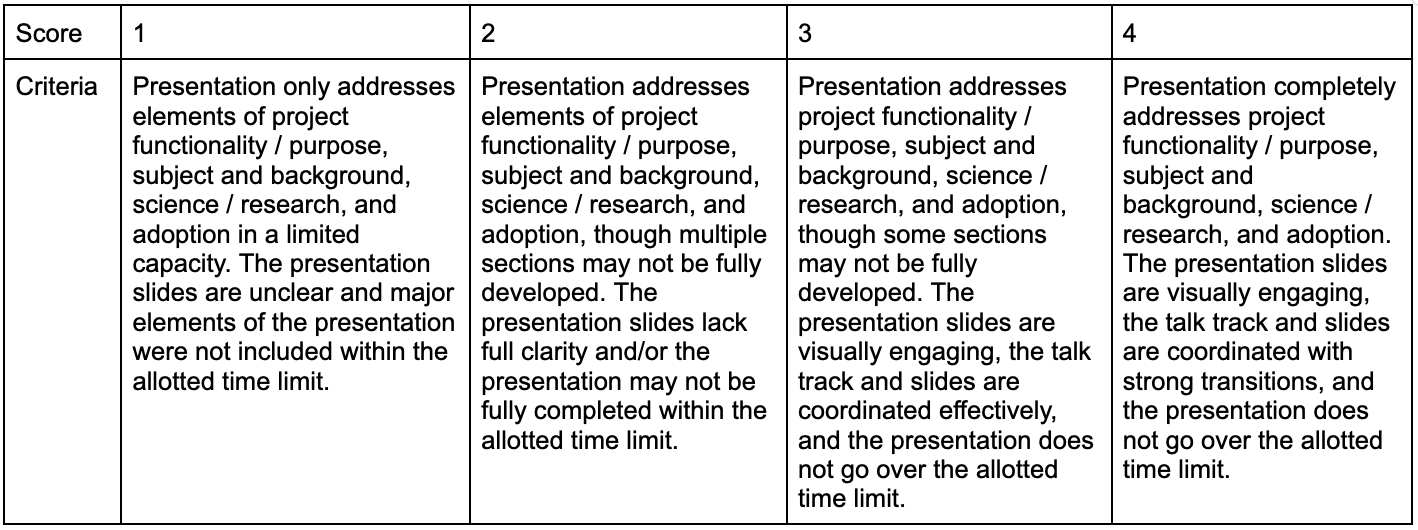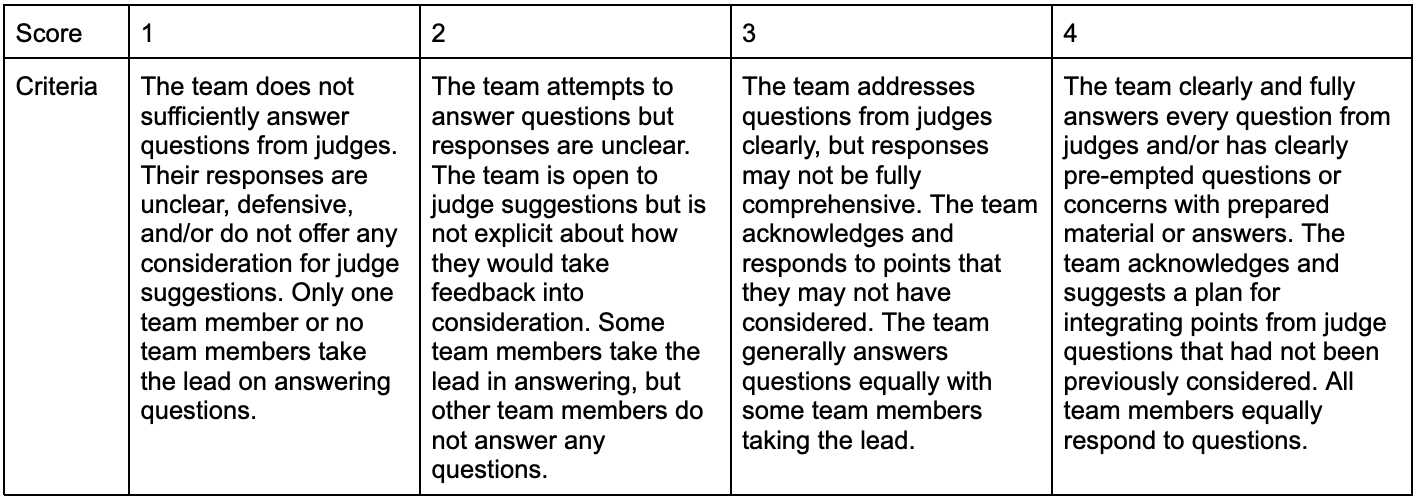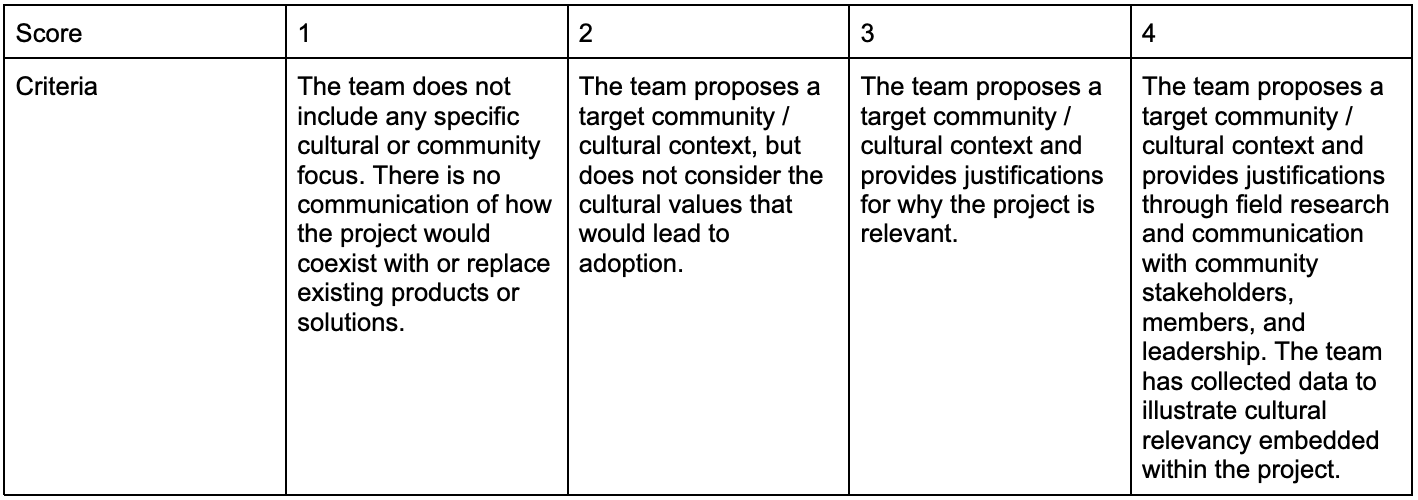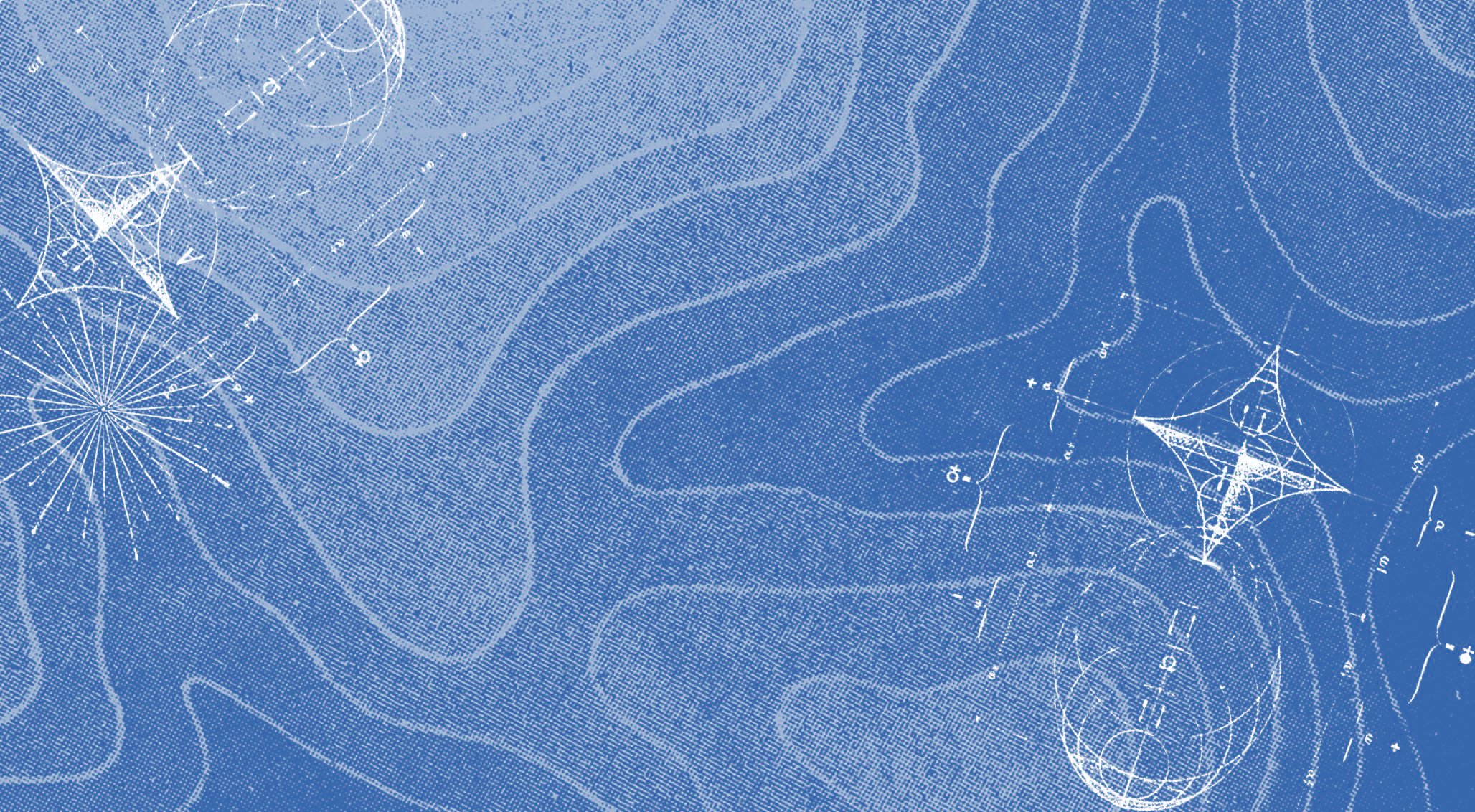
Judging
INFORMATION ABOUT JUDGES TO BE ADDED SOON! RUBRIC BELOW SUBJECT TO CHANGE.
Assessment
Each team is required to create a video (5-minute maximum) and presentation (10-minute maximum) that explains their project and how it responds to the design prompt(s). All presentations will occur during the Final Showcase on December 5. Following their 10-minute presentation, each team will engage in a 5-minute live Q&A with the expert judging panel.
Projects will be evaluated based on the below Judging Criteria, which emphasizes life cycles, the environment, and cultural impacts.
Prizes
Overall Prize
Runner-Up
Outstanding Narrative
Outstanding Art
Outstanding Science
Outstanding Design
Medal Recognitions
Teams will receive recognitions based on their scores from the judges. These recognitions will be indicated on the team’s project page on the BDC website as well as in promotional materials. Medal recognitions are as follows:
Platinum Recognition
A majority of judges indicate the project sufficiently addresses rubric requirements under all four sections: Narrative, Concept, Context, and Reflection.
Gold Recognition
A majority of judges indicate the project sufficiently addresses rubric requirements under at least 3 of the 4 rubric sections.
Silver Recognition
A majority of judges indicate project sufficiently addresses rubric requirements under at least 2 of the 4 rubric sections.
Bronze Recognition
A majority of judges indicate project sufficiently addresses rubric requirements under at least 1 of the 4 rubric sections.
Scoring
For a judge to indicate that the team sufficiently addressed a rubric requirement, they will need to score an average above 2.5 out of 4 on that section. For example, their score across all sections under “Concept” will need to average higher than 2.5.
For each of the major sections, a majority of the judges (>50%) will need to have indicated a score higher than 2.5 in order to receive a recognition of excellence in that section.
For example, if there are 10 judges and six of them scored a team higher than an average of 2.5 for the Concept and Context sections, but for the Narrative and Reflection sections only four of the judges have awarded scores higher than an average of 2.5, this team would receive the Silver Medal for Recognition of Excellence in Concept and Context.
1. Narrative
PRESENTATION:
Each team is expected to prepare a 10-minute (maximum) presentation that will be presented during the Sprint competition. The presentation should explain how the design functions, the subject it addresses, the science behind it, and how it may be adopted. The presentation and slides should be engaging while treating the project seriously.
How well has the team explained the design, the needs to which it responds, the science driving it, how it may be adopted, and the process by which they arrived at the idea?
LIVE DIALOGUE:
Following the video presentation, teams will discuss and answer questions about their projects with the judges for up to 5 minutes.
VIDEO (JUDGES WILL NOT SCORE THIS COMPONENT, BUT MAY REFER TO IT AS THEY JUDGE):
Each team is expected to prepare a 1-5 minute video that will be shared on the Biodesign Sprint website. Teams must create visual renderings that communicate the look, function, and uses of their project. Videos can be narrative, explanatory, or slideshow based. Have fun with it!
2. Concept
ORIGINALITY:
Is the project original and does it approach the theme in an innovative way?
DESIGN:
How effectively and completely does the project respond to the theme?
FEASIBILITY:
a) Scientific: How well has the team demonstrated that current science makes the project possible?
b) Cultural: Has the team considered how the project fits with or replaces current products? How does the project integrate into existing cultural values and norms in its proposed context?
c) Technological: What are the technologies that allow this project to be developed? How clearly does the proposed technology serve the intention of the project? How realistic is the proposed use of the technology in the project?
3. Context
HUMAN IMPACT:
a) Adoption and Use: What factors might motivate potential users to access, adopt, or engage with this project? Has the team considered the people who manufacture and dispose of the product?
b) Scalability and Levels of Impact: Has the team considered how widely the project might be used in regards to demographic change and growth? Has the team communicated the intended scale of the project, and how can the scale of engagement change over time? What external factors can influence the growth and adoption of the proposed product or solution?
c) Ethics: How deeply has the team considered the project’s impacts on the lives of those who do and do not have access to it? (How deeply has the team explored the implications of working with other organisms, if any, in their project? Has the team engaged with established ethical precedents when developing the project? If there are no precedents, how has the team proposed to move forward with the ethical considerations of the project?
SUSTAINABILITY AND REGENERATION:
a) Environmental Impact: How deeply has the team considered the project’s interaction with living environments? How might the project change the living environment, both immediately and gradually, locally and globally?
b) Resources and Life Cycle: How well does the team consider the sourcing and use of resources (e.g. water, feedstocks, living material, energy, labor, etc.)? Has the team considered the project’s entire life cycle? Has the team demonstrated an understanding of the project’s outputs, and does the project necessitate addressing waste streams through principles such as circular design thinking?
RISK:
a) Safety/Dual Use: Has the team considered the potential negative effects of its project? Has the team accounted for possible harm to human health and the living environment associated with its product or process malfunctioning? Has the team considered how its design could be negatively exploited? Has it considered how to mitigate the risks?
4. Reflection
PROCESS:
How much experimentation and exploration has the team done and how well has this been communicated in the presentation? Did the team identify new questions during the process? How well did the team incorporate learnings into their iteration process?
SELF APPRAISAL:
How clearly does the team demonstrate an awareness of their own unique positioning, circumstances, and biases? Has the team recognized all the voices—experts and otherwise—necessary to inform the project? Has the team recognized strengths and weaknesses of its vision? Has it suggested ways to address them? What might next steps be to progress toward the next iteration of the idea?
CRITICAL PERSPECTIVES:
Has the team identified a clear problem or social critique and presented an appropriate response through their project? How does the project engage with complexities and contradictions of their response?
